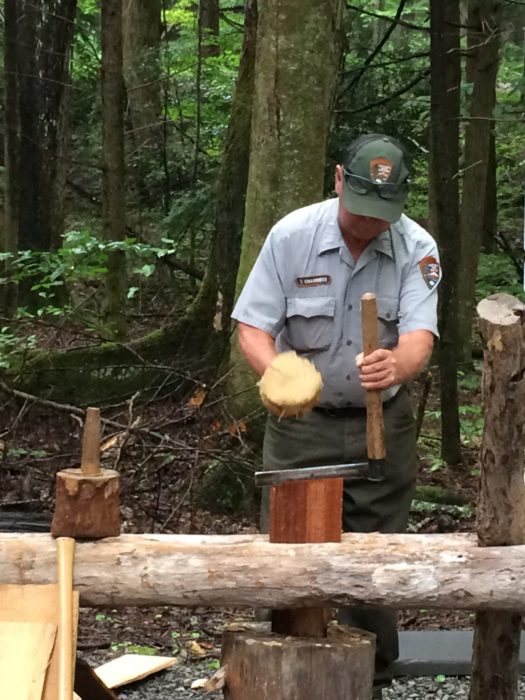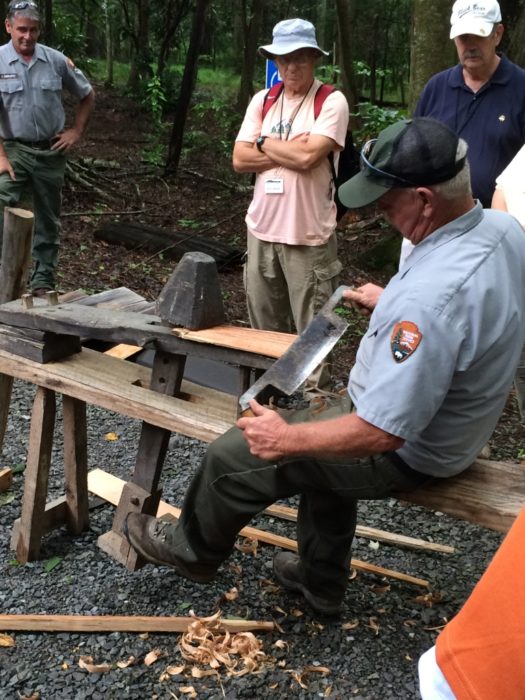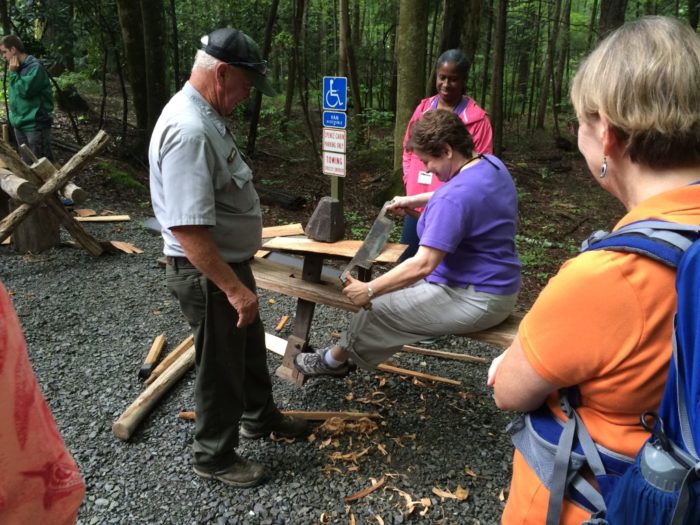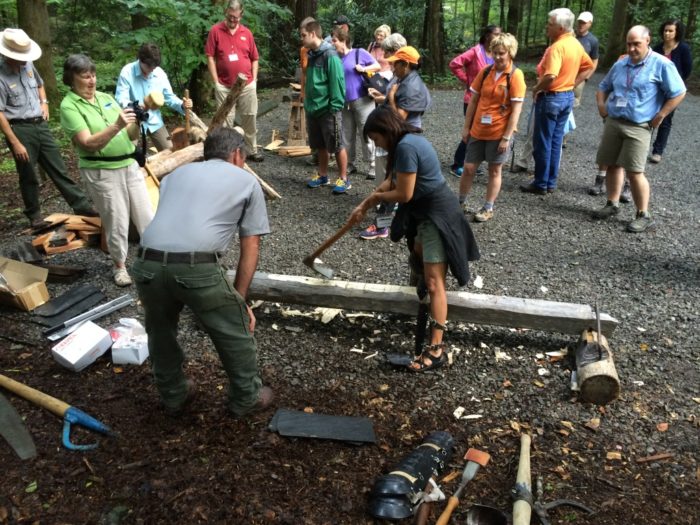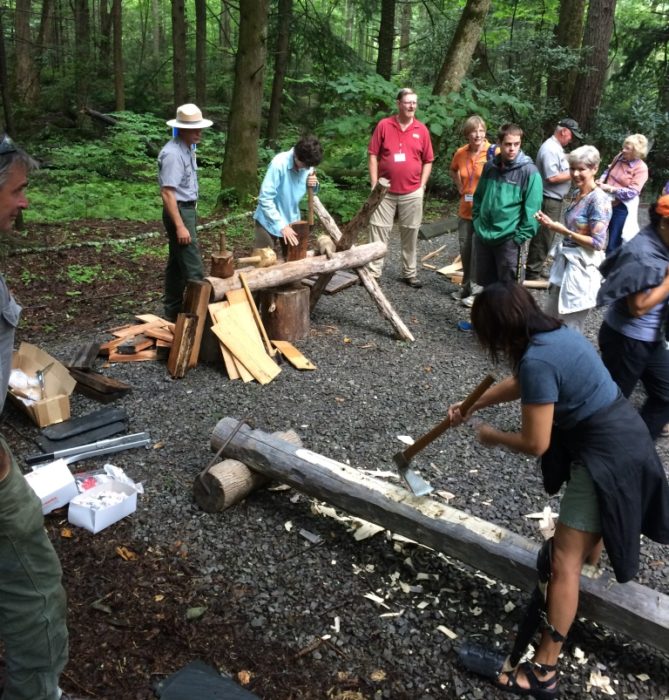by Brent McDaniel, Director of Marketing
Our first session of Experience Your Smokies, “Historic Preservation & Elkmont,” promised to be something special and it did not disappoint.
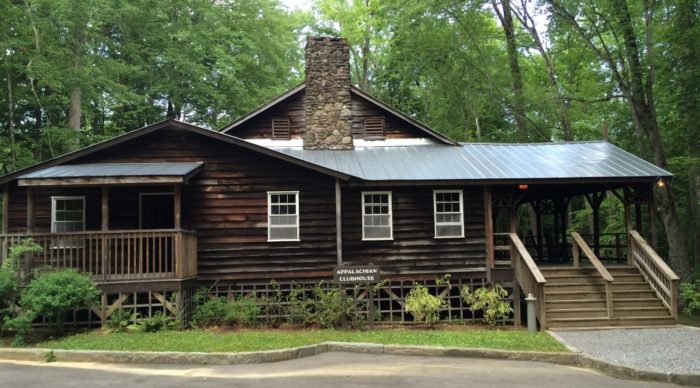
We started our day in the Appalachian Clubhouse, a rebuilt structure originally erected as a lodge for the Appalachian Club and later used as a kind of community center in Elkmont.
The class gathered for an early breakfast and sat down for presentations by Alan Sumeriski and Randy Hatten of the park’s Facilities Management Division. Facilities Management covers quite a lot of ground, from the preservation of 90+ historic structures inside park boundaries to trail rehabilitation and management of 385 miles of park roads.
What’s more impressive is that they do it all with a pretty small staff and on a tight budget. Some funding for their projects comes from federal dollars and some comes through donations to Friends of the Smokies and other park partners (ex – $28,400 in cabin and mill repairs this year).
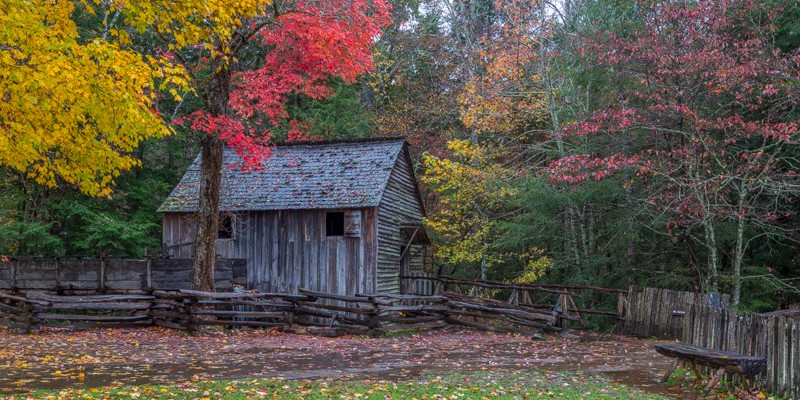
Considering the sheer volume of work they handle, the quality of their historic preservation and restoration work is astounding.
Take for example the roof replacement project on Cable Mill this year. Each of the shingles you see in this photo was cut by hand out of cedar, not bought on a pallet at the hardware store.
Two members of the facilities division, Curtis Middleton and Ted Chambers, were kind enough to set up an interactive demonstration for the EYS class just outside of Spence Cabin.
Splitting cedar shingles
A few of us took turns at splitting the shingles out from a cedar chunk, then refining the edges on a draw horse. That might sound simple, but there is an amazing amount of detail that goes into each one and not something that can be easily taught.
Ted did a lot of his work by feel, knowing from a long tenure in the park service just how thick and long each shingle should be, then carefully crafting its shape so water would flow off efficiently, just as it was done when the building was originally constructed.
We also tried our hand at squaring the sides of a log into a suitable replacement in a log cabin. The process is not easy, that’s for sure.
Matching detail of original builder
And again, I can’t begin to describe the level of detail involved. They don’t just chainsaw any old log to fit as a replacement is a piece rots away; they look at the rest of the existing structure, examining the marks and grooves left by the original builder (sometimes nearly 200 years ago) to determine the tools they used as well as their technique.
Then they take the same kind of log, use the same kind of tool, and cut with the same technique as the original builder. That means matching the original quality, rather than making a potential improvement. After all, not everyone who moved to the Smokies in the 1800’s was a master carpenter — most people were farmers, blacksmiths, butchers, etc.
A few rough cuts here and there make it look like the finished product might not pass a modern home inspection in your neighborhood, but historical accuracy is what we’re after here and this crew does a point-perfect job. The aim isn’t to fix up every building with modern machinery and technology; the aim is to maintain the structure in the same condition as when the building was used, as if you traveled back in time.
Deciding time period of restoration
That brought up an interesting question from the group — how do you decide what time period each building is restored to?
Some buildings in the park were built in the 1850’s and some were actively lived in up until the 1990’s. When you freeze a building in time, do you freeze it when it was built? Or do you freeze it when it was most often used? Or do you freeze it just after the shag carpet was added in the 70’s?
Well, the answer to that can be kind of tricky as it is determined by each building individually, and it’s ultimately up to a historical architect. Most often they will restore a building to it’s hey-day, when it was getting the most activity. In the Smokies, that is usually around the 1920’s and 30’s but can go well back into the late 1800’s.
As I mentioned, some buildings were lived in up until the 1990’s.
Elkmont’s historical significance
Elkmont is a prime example and carries its own historical significance.
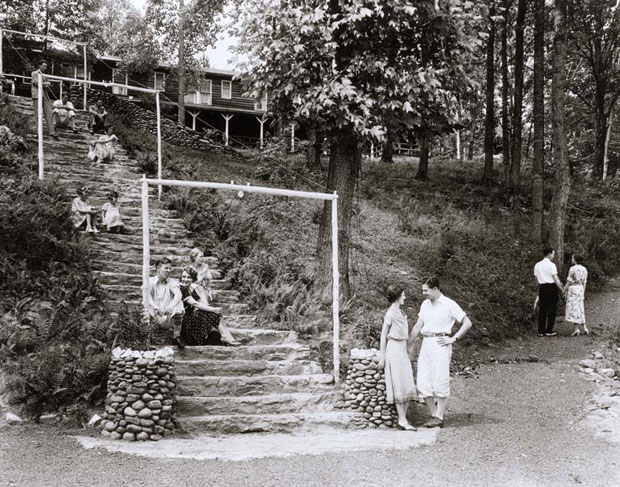
Elkmont holds a special place in the hearts of many park visitors, and for some, a recent heartache.
Before this area became part of the park, Elkmont was a pioneer community, then logging town, and later a resort community with cabins, cottages, and even the Wonderland Hotel.
As the national park movement was gaining steam, it was two Elkmont cottage owners who led the charge in favor of park establishment, Willis Davis and Col. David Chapman. When the park was created in 1934, most of Elkmont’s cottage owners were given lifetime leases for their properties. After much discussion, these were converted to 20-year leases in 1952, and then renewed in 1972.
The National Park Service chose not to renew the leases in 1992, and under the park’s general management plan, the hotel and many of the cottages were to be removed. In 1995, the Wonderland Hotel was partially lost to a fire and the remainder collapsed in 2005.
Elkmont leases expired in 1992
Understandably, some Elkmont residents were very upset by the whole process, like many residents of other areas that would become the national park. But those upset residents were in the minority when the leases expired in 1992, according to former “Elkmonter” and one of our EYS guest speakers for the day, Mike Miller.
“It was time to leave and we knew that,” he told the class. Mike along with Charlotte Appleton, an EYS board member whose family also owned a cottage in Elkmont, shared several stories about growing up in Elkmont, like the local swimming hole where the kids would spend countless summer days.
It is truly amazing to step back in time and see the history of this town preserved by the park.
Some of the cottages and cabins have succumbed to the elements, but the park does have plans to restore 19 structures in Elkmont. With this planned restoration and new wayside exhibits currently being installed, visitors will be able to see into the past and experience the wonderful history of this area far into the future.


